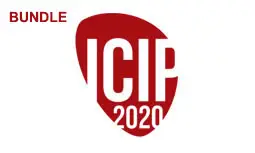END-TO-END RATE-DISTORTION OPTIMIZATION FOR BI-DIRECTIONAL LEARNED VIDEO COMPRESSION
M. Akin Yilmaz, A. Murat Tekalp
-
Members: FreeSPS
IEEE Members: $11.00
Non-members: $15.00Length: 13:05
26 Oct 2020
Conventional video compression methods employ a linear transform and block motion model, and the steps of motion estimation, mode and quantization parameter selection, and entropy coding are optimized individually due to combinatorial nature of the end-to-end optimization problem. Learned video compression allows end-to-end rate-distortion optimized training of all nonlinear modules, quantization parameter and entropy model simultaneously. While previous work on learned video compression considered training a sequential video codec based on end-to-end optimization of cost averaged over pairs of successive frames, it is well-known in conventional video compression that hierarchical, bi-directional coding outperforms sequential compression. In this paper, we propose for the first time end-to-end optimization of a hierarchical, bi-directional motion compensated learned codec by accumulating cost function over fixed-size groups of pictures (GOP). Experimental results show that the rate-distortion performance of our proposed learned bi-directional GOP coder outperforms the state-of-the-art end-to-end optimized learned sequential compression as expected.



